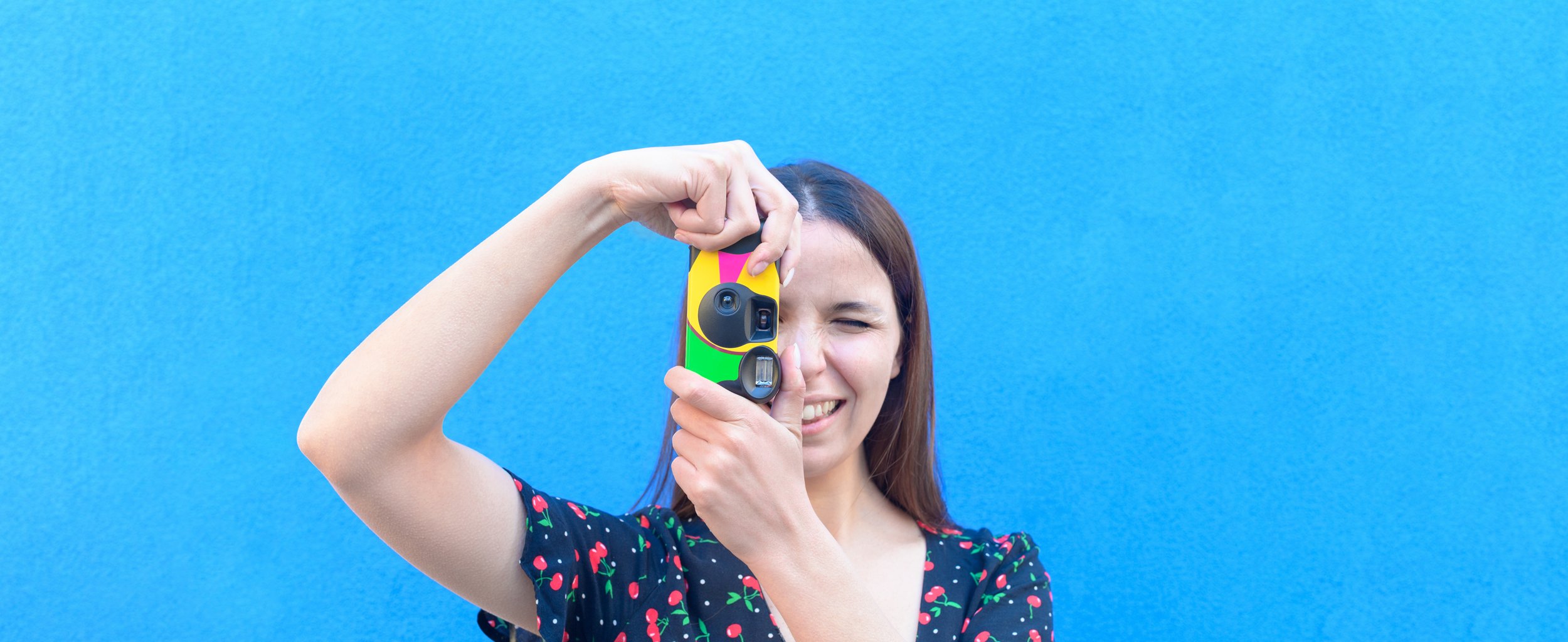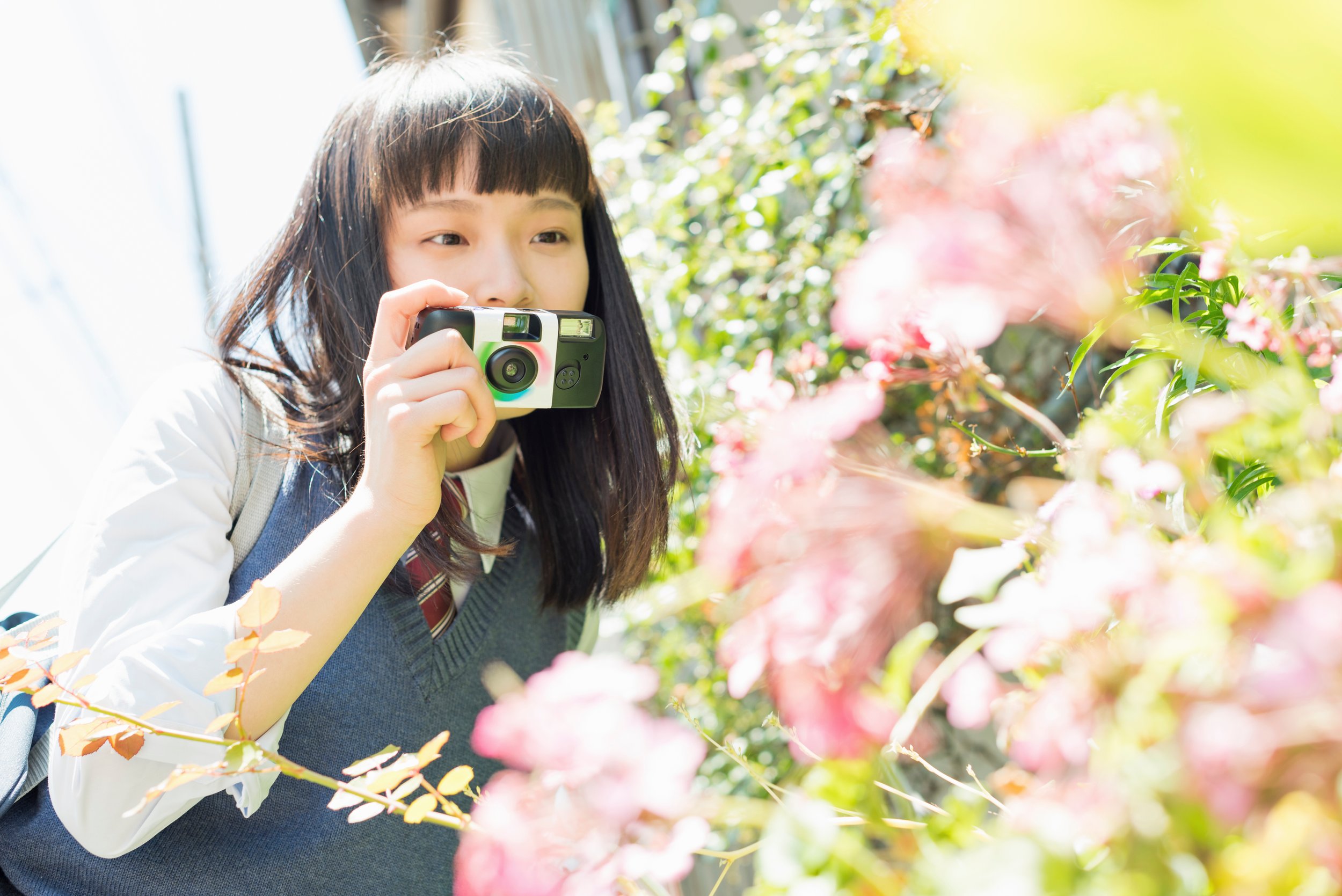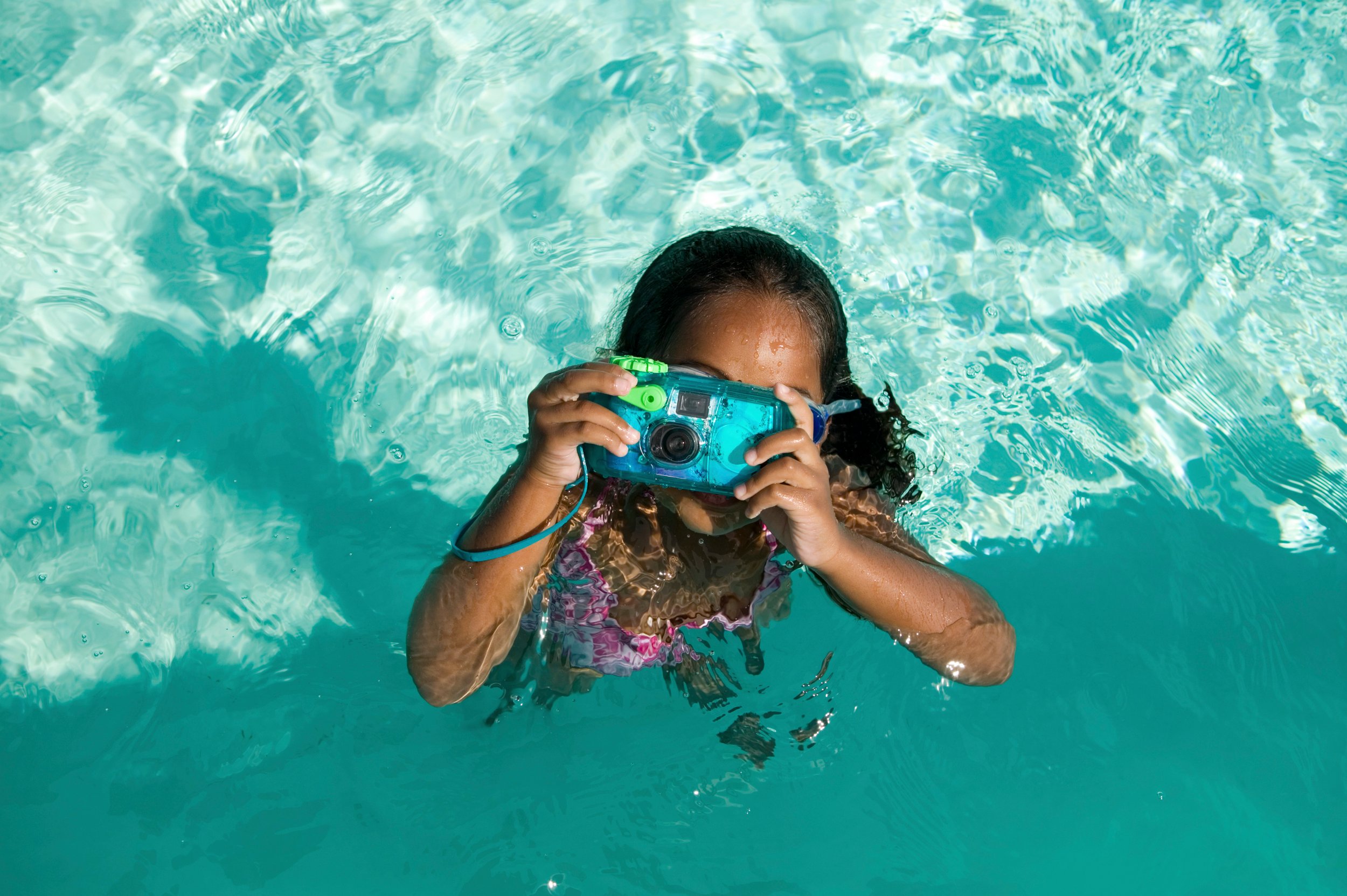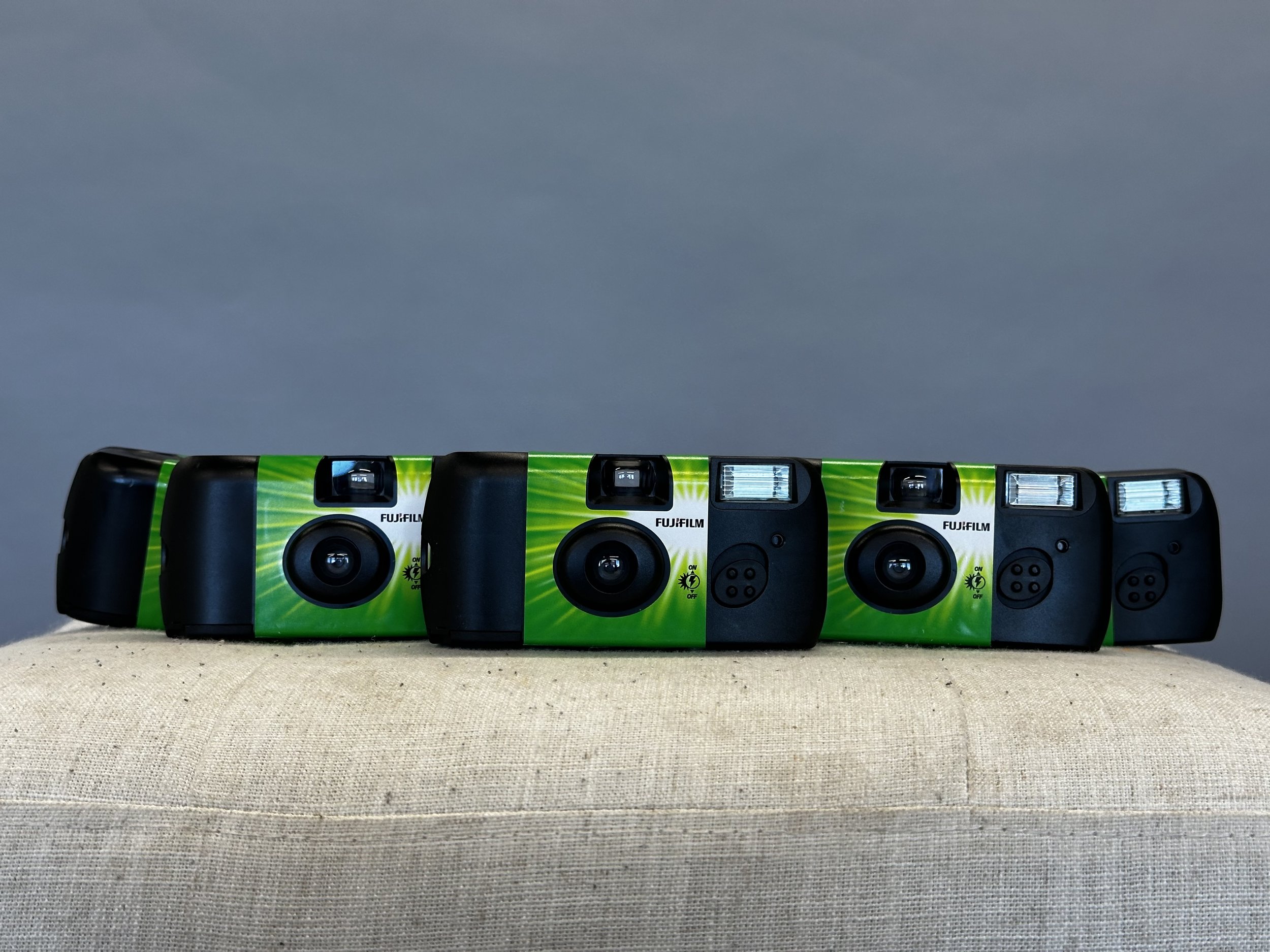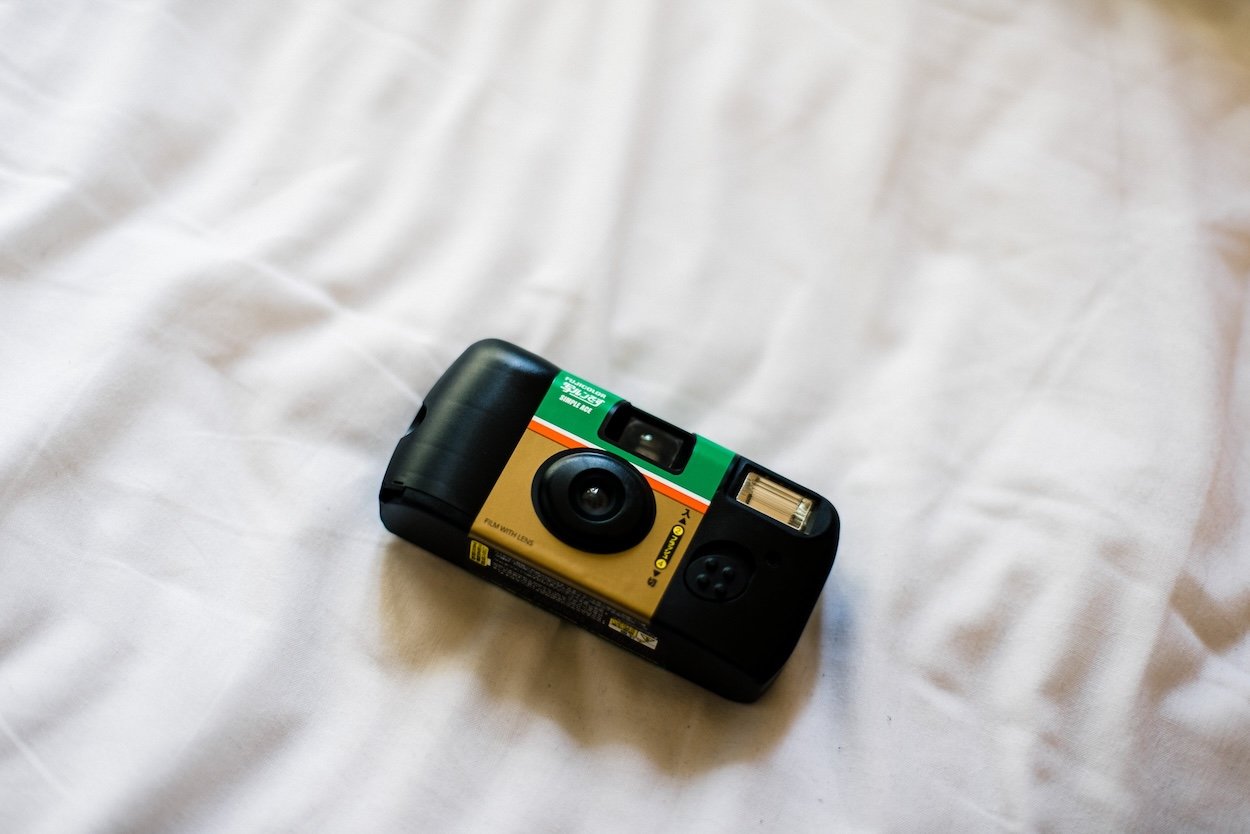From Click to Print: Navigating the World of Disposable Camera Film Developing
In a digital era where the instant gratification of seeing photos seconds after they're taken reigns supreme, the allure of disposable cameras and the anticipation of film developing hold a unique charm. The process of developing film from disposable cameras might seem like a relic of the past to some, but for enthusiasts and a growing number of wedding couples, it's a treasured experience that adds depth and nostalgia to photographic memories. Here's your guide to navigating the world of disposable camera film developing, ensuring those precious moments are brought to life with the warmth and character only film can provide.
Understanding Film Development
Film development is the chemical process used to make photographic images appear on film after it has been exposed to light. For disposable cameras, this process is the same as for traditional film cameras, though the simplicity and affordability of disposables make them an attractive option for events, special occasions, or just casual photography.
Where to Develop Your Disposable Camera Film
Local Photography Stores: Many local camera shops offer film developing services or can recommend nearby places that do. This option often provides a more personal touch, with staff who can offer advice or even customize the development process according to your needs.
Pharmacy Chains: Some large pharmacy chains still offer film developing services for disposable cameras. It's a convenient and cost-effective option, though the quality and range of services might be more limited compared to specialized shops.
Mail-In Services: With the decline of local development options, mail-in services have gained popularity. These services allow you to send your disposable cameras or film rolls to a lab, where they'll be developed, printed, and/or digitized. Many offer online tracking and return your negatives along with the prints or digital files.
We specialize in developing disposable cameras! While we develop all types of film, new and old disposable cameras are our main focus. If you’re ready to get your disposable camera developed, click the button below to get started!
Choosing Between Prints, Digitals, or Both
When developing film from disposable cameras, you often have the choice between getting physical prints, digital copies, or both. Prints offer a tangible connection to your memories, perfect for albums or wall art. Digital files, on the other hand, are ideal for sharing on social media, making copies, or editing. Many choose both for the best of both worlds.
Tips for Successful Film Development
Note the Expiration: Film does expire, so check the date on your disposable camera if it's been sitting around. While expired film can produce interesting and unexpected results, it's best to develop your film promptly after use for the highest quality photos.
Keep Film Cool: Store your used disposable cameras in a cool, dry place until you're ready to develop them. Extreme temperatures can affect film quality.
Label Carefully: If you're sending film off for development, label each camera or roll clearly, especially if you have specific instructions or requests.
Ask for Recommendations: Don't hesitate to ask for recommendations on where to develop your film, especially if you're looking for specific qualities, like high-resolution scans or color correction.
Embracing the Unpredictability
Part of the charm of using disposable cameras and film photography, in general, is the unpredictability. Light leaks, grain, and even the occasional thumb over the lens contribute to the unique, timeless quality of film photos. Embrace these imperfections as part of the storytelling of your event or adventure.
In the age of digital perfection, the tactile experience of film from a disposable camera offers a refreshing pause, a reminder of the days when photography was as much about the anticipation of seeing your pictures as it was about capturing the moment itself. Whether you're documenting a wedding, a holiday, or everyday life, the process of developing film invites a slower, more deliberate approach to photography, one where each click is a tangible piece of a larger narrative waiting to be revealed.
Want to Learn More about Developing Your Disposable Cameras?
Check out the blog post below to find out more about turning your disposable camera into digital prints!
10 Creative Ways to Use Disposable Cameras at Your Wedding
10 Creative Ways to Use Disposable Cameras at Your Wedding
Weddings are all about creating memories that last a lifetime, and what better way to capture those spontaneous, unscripted moments than with disposable cameras? The charm of film photography, combined with the excitement of not knowing how the photos will turn out until they're developed, adds a unique touch to any wedding celebration. Here are 10 creative ways to incorporate disposable cameras into your big day, ensuring that every laugh, tear, and dance move is captured from every angle.
1. Table Centerpieces
Place a disposable camera at the center of each table, encouraging guests to take photos of each other throughout the event. Not only does this serve as a great icebreaker, but it also ensures you get candid shots from the perspectives of your guests.
2. Photo Scavenger Hunt
Create a photo scavenger hunt list for your guests, with prompts like "capture a photo of someone laughing," "take a picture with someone you just met," or "snap a shot of the most creative dancer." It's a fun way to engage your guests and collect a wide variety of photos.
3. Ceremony Shots from Every Angle
Distribute disposable cameras among guests seated in different areas during the ceremony. This way, you can see your special moment through the eyes of your loved ones, capturing angles your professional photographer might miss.
4. Guestbook Alternative
Set up a photo guestbook station where guests can take a selfie with the disposable camera and then leave a message in a custom album. Later, you can develop the photos and add them next to their messages.
5. Pre-Wedding Festivities
Hand out disposable cameras during pre-wedding events, like the rehearsal dinner or a welcome cocktail hour. It's a great way to start documenting the wedding festivities early and include moments that might otherwise be overlooked.
6. The Kids' Table
Keep the younger guests entertained by placing disposable cameras at the kids' table. You'll be surprised at the unique and often humorous perspectives children can capture.
7. Wedding Party Adventures
Give each member of your wedding party a disposable camera to document their experiences throughout the day. From getting ready to the post-reception party, you'll get a personal look at your wedding from the people closest to you.
8. Departure Send-off
As you make your grand exit, have guests snap photos with disposable cameras. Whether it's a sparkler send-off or a traditional rice toss, these candid shots will be a treasured reminder of your send-off into married life.
9. Honeymoon Starters
Pack a couple of disposable cameras for your honeymoon and capture the beginning of your new adventure together. The simplicity of these cameras allows you to enjoy the moment without worrying about settings or battery life.
10. Thank You Cards
Use the developed photos from the disposable cameras to create personalized thank you cards. Selecting candid shots of your guests enjoying the celebration adds a personal touch that's sure to be appreciated.
Incorporating disposable cameras into your wedding is not only a nod to nostalgia but also a creative way to engage your guests and capture the essence of your celebration from multiple perspectives. As you look back on these photos, you'll cherish the raw, candid moments that a disposable camera can so perfectly encapsulate, reminding you of the joy and love that surrounded you on your special day.
Conclusion
There are a lot of great ways you can use disposable cameras to enhance your wedding day! Kodak and Fuji disposable cameras work great at weddings and you can shop a lot of great options on Amazon - Click Here to shop Amazon Now!
We also carry disposable cameras made in house with Kodak Cinema film, which through a lot of testing we have discovered produces some of the best results! Browse our Etsy Shop by clicking the link below!
Where to Buy Disposable Cameras: A Shopper’s Guide
In a surprising yet delightful trend, disposable cameras have seen a renaissance in the social media era, championed by the likes of wedding throwbacks and the undying lure of film photography. But, amidst our culture's passion for apps and pixels, where does one find these nostalgic capture devices? This deep dive explores where you can buy disposable cameras and the playground of grainy saturations and focus-imperfect flash in 2024.
Local Drugstores and Retail Giants
Believe it or not, your travel to yesteryears’ photography might just start in the aisles of a modern, multifaceted drugstore. Reatilers such as CVS, Walgreens, and Boots (UK) not only typically offer a surprising endcap or lineup of digital photos and camera-related tab, but they're also going strong with their stock of the much-coveted disposables. Equally, the remarkable power aisles of Walmart and Target could just be the space where your phone-free photo events get their subplot.
Here are a few places where you can still buy throwaway cameras today:
Walmart
Walgreens
CVS
Target
5 Below
BestBuy
Pros of Buying Dipsosable Cameras Locally:
Ease of Access: Most places have a WalMart or a Walgreens or CVS nearby. In larger cities you’ll have a choice of several stores to choose from.
Competitive Pricing: With corporate buying power, these retail giants and buy in bulk and keep prices competitive! You’ll more than likely find throw away cameras similarly priced at most of these locations.
Cons of Buying Disposable Cameras Locally:
Limited Selection: Your local drugstore may keep stock of the most occasion-worthy cameras - Kodak, and Fujifilm - but diversity is definitely lacking. There are other brands and styles of disposables out there. Kodak makes 7 different disposable cameras and FujiFilm makes a few different styles of disposables. There are also several other types of disposables out there from Ilford and others, but you won’t find a broad selection in these retail stores.
Low Stock: During peak seasons like spring and summer, these cameras sell out fast and are often slow to be restocked. There always seem to be a few lingering on Walmart shelves, but many drug stores sell out and stay out for a few weeks at a time.
Old Stock: The cameras stocked at big brand retailers often have an shorter shelf life as they are ordered in bulk and take awhile to make their way through the distribution network. Check the expiration date on the bottom of the packaging and make sure your throwaway cameras will still be in date when you’re going to be using them.
Online Marketplaces
Key players, including Amazon, eBay, and even Etsy carry disposable cameras. But the buyer beware of deals that might be too good to be true as low quality lower priced disposable cameras from Chinese mass-production factories are all over these online market places.
Dedicated photography websites like B&H Photo and ShutterJunkies.org are more like to have high quality products available from reputable brands like Kodak, Fuji, Ilford, and others.
Pros:
Diversity: Lots of options in brand and film types.
Comparison Robustness: Course correct or grade every prospect against user reviews and ratings, all but a catalogue-flick away.
Cons:
Questionable Quality: One might find their soul's analog child wrapped in unreasonable price musings, especially within the ever-seductive primary marketplace and those individual re-sellers.
Shipping Waits: While some retailers can get orders to you the next day, you may be waiting 2 to 3 days to get your online orders. If you’re needing a disposable camera now, then an online retailer won’t work for you.
Specialty Photography Stores
Local photography stores are much harder to find. Usually only larger cities have them but if you’re lucky, they’ll be one near you. A quick Google search for something like “photography store” or “photo lab” might help you find something near you.
Pros of Buying at Local Photography Stores:
Experienced Advice: Most local photography stores and small photo labs are projects of passion and the owners are usually very experienced photographers and can help advise you about which disposable camera would work best you for you and your event or needs.
A Better Selection: Most photography specialty shops will carry more than just one brand or style of disposable camera. The selection won’t be as great as what you could find online, but it will be more robust that what you could probably find in a big box retailer.
Cons of Buying at Local Photography Stores:
Higher Prices: Local shops don’t have the benefit of large orders and bulk discount pricing. The prices at these stores are usually a little higher than big stores or online shops. But the up side to this is that you’re supporting a small business!
Accessibility: While photography shops were once plentiful, they are a pretty rare find in the majority of places across the country.
Conclusion
While the film apocalypse caused people to believe that film was dead, its alive and well and thriving. Disposable cameras and all types of film are still for sale at many different retailers, both local and online. When its time for you to get some new disposable cameras, you’ve got a lot of options and opportunities to shop and find the style you want at a reasonable price!
Mastering the Art of Disposable Camera Photography: Top Tips for Stunning Shots
Mastering the Art of Disposable Camera Photography: Top Tips for Stunning Shots
In an era dominated by digital cameras and smartphones, the humble disposable camera holds its ground with a charm that's hard to replicate. The grain, the colors, and the unpredictability contribute to the magic of each shot. However, mastering the art of photography with a disposable camera requires a different set of skills and an appreciation for the nuances of film. Here are some invaluable tips to help you capture stunning photos with a disposable camera, turning limitations into creative opportunities.
1. Embrace Natural Light
Disposable cameras thrive in natural light. Their fixed ISO (usually around 400 or 800) and lack of manual settings make them perfect for bright, outdoor environments. Aim to take your photos during the golden hour—just after sunrise or before sunset—when the light is soft, warm, and flattering. In harsh midday sun, seek shaded areas to avoid overexposed shots and harsh shadows.
2. Get Close to Your Subject
Without the luxury of zoom, getting physically close to your subject is crucial. This not only fills the frame for a more compelling composition but also ensures your subject is in clear focus. Disposable cameras are generally optimized for shooting subjects within a few feet away, making them ideal for portraits and close-up shots of interesting details.
3. Make the Most of the Flash
Many disposable cameras come with a built-in flash, but its range is limited. Use the flash for indoor shots or in low-light conditions, but remember, it's most effective within 4 to 10 feet of your subject. For a creative twist, try using the flash during the day to fill in shadows, especially for portraits or when the sun is behind your subject.
4. Mind Your Composition
With no option to crop or adjust your shot post-capture, composition is key. Use the rule of thirds to create a balanced image, placing your subject off-center for a more natural, dynamic composition. Pay attention to the background, too; clutter can detract from your subject, while a clean, interesting backdrop can add context and depth to your photo.
5. Experiment with Perspectives
Disposable cameras, with their fixed focal length and wide-angle lens, are surprisingly versatile for creative compositions. Don't hesitate to play with angles and perspectives. Shoot from down low or up high, get close to the ground for a dramatic effect, or capture reflections in puddles or windows. These unconventional angles can turn an ordinary scene into a captivating photo.
6. Pay Attention to the Viewfinder
Don’t cut yourself out of the photo!
While the viewfinder in a disposable camera doesn't offer a 100% accurate representation of what will be captured, it's still a valuable tool for framing your shots. Be mindful of the edges of your frame and remember that the actual photo might be slightly wider. This can help you avoid cutting off important elements or letting in unwanted ones.
7. Keep It Steady
Blurry photos are often the result of camera shake, a common issue with the lightweight nature of disposable cameras. To minimize this, hold your camera with both hands and brace your elbows against your body for stability. Take a deep breath, exhale slowly, and press the shutter button gently to reduce any movement.
8. Be Mindful of the Environment
Remember that every shot counts with a limited number of exposures. Be deliberate with your photography, but don't be afraid to take the shot when you see it. Sometimes, the spontaneous, unplanned moments captured on a whim turn out to be the most memorable.
Embracing the Disposable Camera Experience
Photography with a disposable camera is as much about the experience as it is about the resulting photos. It teaches patience, presence, and appreciation for the moment. By following these tips, you'll not only improve your skills with a disposable camera but also develop a deeper understanding and love for the art of photography itself. So, grab a disposable camera, and let the adventure begin.
And when it’s time to develop those disposable cameras, you can send them in to us! The guys at Shutter Junkies Photo Lab are the Disposable Camera Experts! We develop hundreds of disposable cameras each day from all over the world. CLICK HERE to get your cameras developed! Or if you’d like to read more, check out our article on where you can get your disposable cameras developed HERE.
Disposable Cameras vs. Digital Photography: Pros and Cons
Disposable Cameras vs. Digital Photography: Pros and Cons
In the digital age, the concept of capturing moments has evolved dramatically. Yet, amidst the surge of smartphones and high-tech cameras, disposable cameras have made a surprising comeback, offering a nostalgic and unique way to document life's moments. This post delves into the fascinating world of disposable cameras versus digital photography, exploring the pros and cons of each to help you decide which suits your photographic journey best.
Disposable Cameras: The Comeback Kid
Pros:
Simplicity and Ease of Use: Disposable cameras offer a straightforward approach to photography. With no settings to adjust apart from the flash, they're incredibly user-friendly, making them perfect for all ages and skill levels.
Unique Aesthetic: The film in disposable cameras produces photos with a distinct look and feel—warm tones, natural grain, and soft focus—that digital cameras can't quite replicate. This aesthetic is highly sought after in an era where authenticity in imagery is cherished.
Surprise and Anticipation: Part of the disposable camera's charm lies in the wait and surprise of seeing your photos for the first time after development. It brings back the excitement and anticipation that digital photography often lacks.
Durability and Portability: Their compact, lightweight design and lack of reliance on batteries or charging make disposable cameras excellent companions for adventures where you wouldn't risk an expensive digital camera.
Cons:
Cost Over Time: While the initial purchase might seem affordable, the costs of developing film can add up, especially if you're an avid photographer.
Limited Exposures: Disposable cameras come with a fixed number of shots (usually between 24 to 36), limiting how many moments you can capture before needing a new one.
Environmental Impact: The single-use nature of disposable cameras raises concerns about waste and environmental sustainability.
Inconsistent Results: Depending on various factors like lighting and the camera's limited dynamic range, the quality of photos can be hit or miss.
Digital Photography: The Modern Marvel
Pros:
Versatility and Control: Digital cameras offer a range of settings to adjust for any lighting condition, ensuring high-quality images in various environments.
Instant Gratification: The ability to instantly review photos allows for immediate do-overs if a shot doesn't turn out as expected, reducing the chances of missed moments.
Cost-Effectiveness Over Time: Despite the higher initial investment, digital cameras can be more economical in the long run without the recurring costs of film and development.
Eco-Friendliness: Digital photos don't require physical materials for development, making them a more environmentally friendly option compared to film.
Cons:
Overwhelming Complexity: The multitude of settings and options available on digital cameras can be daunting for beginners, detracting from the spontaneity of capturing moments.
Constant Upgrades: The fast pace of technological advancements in digital photography can make equipment quickly feel outdated, pressuring users to upgrade frequently.
Less Tangible: The ease of taking hundreds or thousands of photos can lead to digital clutter, where images are stored and forgotten on hard drives rather than being printed and appreciated.
Finding Your Focus
Choosing between disposable and digital photography boils down to personal preference and the experience you're seeking. If you're drawn to the simplicity, unique aesthetic, and excitement of film, disposable cameras might be your perfect match. On the other hand, if you prioritize versatility, control, and the ability to experiment with settings without worrying about film costs, digital photography will suit you well.
Regardless of your choice, both mediums offer unique ways to capture and celebrate moments. Whether you lean towards the nostalgic charm of disposables or the cutting-edge precision of digital, the most important thing is to keep exploring the world through your lens, capturing memories that resonate with you.
How to Develop Disposable Camera Photos: A Step-by-Step Guide
How to Develop Disposable Camera Photos: A Step-by-Step Guide
In the age of instant digital images, the unique charm of film photography is making a notable resurgence. Disposable cameras, with their simplicity and ability to capture raw, unfiltered moments, play a significant role in this analog revival. However, once you've clicked your way through a roll of film, you're faced with the exciting yet sometimes daunting task of developing your photos. This guide will walk you through the process of developing disposable camera photos, ensuring your memories are preserved in the most beautiful way possible.
Step 1: Finish Your Roll
Before you think about developing, make sure you've used all the exposures on your camera. Most disposable cameras come with around 27 to 39 exposures. It's essential to maximize each roll, as developing costs the same regardless of how many pictures you've taken.
Step 2: Choose Your Developing Service
When it comes to developing your film, you have a few options:
Local Drugstores and Photo Labs
Many local drugstores and photo labs offer film developing services. This is a convenient option if you live near one. They typically send out the film to a central lab, which means it might take a week or two to get your photos back. Prices can vary, so it's worth checking a few places for the best deal.
Specialty Film Labs
For those seeking higher-quality scans and more personalized service, specialty film labs are the way to go. These labs often provide detailed scanning options, including high-resolution scans and color correction. They cater to film enthusiasts and professionals, ensuring your disposable camera's film gets the attention it deserves.
Mail-In Services
Mail-in services are a fantastic option if you don't have local developing options or prefer the convenience of not leaving home. You mail your disposable camera to the lab, and they send back your developed photos and negatives. Some services even offer digital downloads so you can access your photos online.
Step 3: Understand the Costs
Developing costs can vary based on where you go and the services you choose. Basic developing and printing might start around $10 to $15 per roll, with additional costs for CD or digital downloads. Higher-resolution scans and faster turnaround times can increase the price. Always check what’s included in the price, such as negatives return or extra prints.
Step 4: Prepare Your Camera for Drop-off or Mail
If you're using a local service, simply take your disposable camera as is. For mail-in services, securely package your camera in bubble wrap or a padded envelope. Ensure you fill out any required forms and include your contact information and preferences for prints or digital copies.
Step 5: Review and Share Your Photos
Once you receive your developed photos, take the time to go through them. The anticipation and surprise of seeing your images for the first time is a unique joy of film photography. Consider creating physical albums or sharing your photos online with friends and family.
Additional Tips for Developing Disposable Camera Photos
Check Reviews: Before choosing a developing service, look for reviews or ask for recommendations from fellow photography enthusiasts.
Bulk Deals: If you have multiple rolls to develop, ask if there are any discounts for bulk orders.
Preserve Your Negatives: Always ask for your negatives back, as they are your original images and can be used for reprints or scans in the future.
Developing photos from a disposable camera adds an exciting chapter to your photography journey, bridging the gap between capturing moments and holding them in your hand. Whether you opt for the convenience of a local drugstore, the expertise of a specialty lab, or the simplicity of a mail-in service, the process of bringing your film to life is a rewarding experience that celebrates the enduring appeal of analog photography.
More Reading…
Check out our other posts about finding a lab that works for you! Here’s the link to read more.
The Ultimate Guide to Disposable Cameras
The Ultimate Guide to Disposable Cameras
In an era where digital photography reigns supreme, the humble disposable camera offers a refreshing, nostalgic throwback to simpler times. These compact, easy-to-use cameras, preloaded with film, provide a unique way to capture moments with a distinct charm that digital cameras can't replicate. This ultimate guide to disposable cameras will navigate you through everything from selecting the right camera to tips for capturing stunning photos, ensuring that your analog adventures are as memorable as the moments you're capturing.
Why Choose Disposable Cameras?
Disposable cameras come with a certain simplicity and spontaneity that digital photography often lacks. Without the ability to preview or edit images on the spot, every click counts, adding a thrilling sense of anticipation to seeing the developed photos. They're perfect for weddings, parties, vacations, or any event where you want to capture moments without worrying about the safety or settings of a more expensive camera.
How to Use Disposable Cameras
Using a disposable camera is straightforward:
Look through the viewfinder to compose your shot. Remember, what you see is pretty close to what you'll get, but the viewfinder is not 100% accurate.
Check the lighting. Most disposables perform best in bright, outdoor settings. Indoor or low-light conditions may require a flash, so if your camera has one, make sure it's activated.
Press the shutter button firmly to take your picture. If your camera has a flash, give it a few seconds to charge between shots.
Wind the film using the wheel or lever after each shot to prepare for the next one.
Choosing the Best Disposable Cameras for 2024
When selecting a disposable camera, consider the following factors:
Film ISO: Cameras with higher ISO film (400 or above) are more versatile, performing better in varied lighting conditions.
Flash: A built-in flash is crucial for indoor or nighttime photography.
Number of exposures: Most disposables offer between 24 to 36 shots. Choose based on how extensively you plan to use the camera.
Brand reputation: Kodak and Fujifilm are among the most popular and reliable brands.
Top Picks for 2024
Kodak FunSaver: A classic choice, known for its vibrant colors and reliability, suitable for all kinds of lighting conditions.
Fujifilm QuickSnap: Offers crisp images with excellent color saturation, perfect for daylight scenes.
Ilford XP2 Super Single Use: A great option for black and white photography enthusiasts, delivering sharp, high-contrast images.
Tips for Getting the Best Photos
Maximize natural light: Shoot outdoors or in well-lit areas as much as possible.
Get close to your subject: Disposable cameras don't have zoom, so move closer to fill the frame with your subject for a more impactful photo.
Use the flash wisely: For indoor or low-light conditions, make sure the flash is used within its effective range (usually 4-10 feet).
Experiment: Don't be afraid to play with angles, perspectives, and compositions.
Developing Your Photos
Once you've used up all the exposures, it's time to develop your film. You can take your disposable camera to a local drugstore, photography shop, or use a mail-in service. Prices and turnaround times vary, so consider your options based on your needs.
Embracing the Disposable Camera Experience
Disposable cameras offer a unique, fun way to capture life's moments. The anticipation of waiting for photos to be developed adds an element of surprise and excitement to photography that digital cameras can't match. Whether you're documenting a special occasion or just capturing everyday moments, disposable cameras remind us of the joy of photography in its purest form.
Remember, the best camera is the one you have with you, ready to capture the moment. Disposable cameras invite us to look at the world with fresh eyes and appreciate the beauty of unplanned, unedited snapshots of life. So, grab a disposable camera and start capturing your adventures in a classic, unforgettable way.
When you’re ready to develop your cameras, check out our developing options HERE!
Rediscovering the Charm of Disposable Cameras
In an era dominated by digital photography, the timeless allure of disposable cameras emerges as a refreshing reminder of photography's essence. These compact, simple-to-use devices, also known as single-use cameras, offer a unique blend of convenience, surprise, and nostalgia, making every click a thrilling leap into the unknown. This post delves into the world of disposable cameras, exploring their features, benefits, and the distinctive charm that makes them a beloved choice for photographers of all levels.
The Unmatched Simplicity of Disposable Cameras
Disposable cameras come with a straightforward appeal: they are incredibly easy to use. Pre-loaded with film, these cameras eliminate the complexities associated with digital photography, such as battery life concerns, storage issues, and intricate settings. This simplicity makes them an ideal choice for events, weddings, vacations, and even everyday adventures, allowing users to focus purely on capturing moments without the distractions of technology.
Key Features:
Pre-loaded Film:** Typically loaded with 27 exposures, offering a finite but exciting challenge to make every shot count.
Fixed Focus Lens:** Designed to capture clear images without the need for manual adjustments.
Built-in Flash:** Ensures that you can snap photos in various lighting conditions, adding versatility to its compact form.
The Joy of Anticipation and Surprise
One of the most captivating aspects of disposable cameras is the element of surprise. Unlike digital cameras that offer instant gratification, disposable cameras require patience, as you won't see the results until the film is developed. This waiting period reignites the joy of anticipation, making the reveal of your photos a moment of genuine surprise and delight.
Perfect for Every Occasion
Whether it's a beach holiday, a friend's wedding, or a spontaneous road trip, disposable cameras are the perfect companion for capturing life's fleeting moments. Their durability and ease of use make them suitable for situations where you wouldn't risk using a digital camera or smartphone. Moreover, the unique aesthetic of film photography adds a timeless quality to your images, imbuing them with character and warmth that digital images often lack.
Disposable vs. Digital: A Friendly Rivalry
While digital cameras offer convenience and versatility, disposable cameras bring their own set of advantages to the table:
Authenticity:** The grain, color saturation, and unexpected imperfections of film photography offer a sense of authenticity and raw beauty.
Mindfulness:** The limited number of exposures encourages more thoughtful composition and subject selection.
Tangibility:** The physical photos produced from film have a tactile quality that digital images cannot replicate, offering a personal touch to the memories captured.
Embracing the Disposable Camera Trend
Despite the digital age, the demand for disposable cameras has seen a resurgence among photography enthusiasts and millennials alike. This revival speaks to a growing desire for simplicity and a break from the constant connectivity of modern life. As disposable cameras continue to charm their way into the hearts of a new generation, they remind us of the joy found in simplicity and the enduring appeal of capturing moments that tell a story.
Conclusion
In a world where technology constantly evolves, the disposable camera stands as a testament to the timeless appeal of film photography. Its simplicity, coupled with the excitement of developing unseen images, offers a unique photographic experience that digital cameras cannot replicate. Whether you're a seasoned photographer or a casual enthusiast, embracing the charm of disposable cameras can add a new dimension to your photographic adventures, creating memories that are not only captured but truly felt.
Rediscovering Analog Charm: The Allure of Disposable Cameras
Developing Disposable Cameras Online
In an age dominated by high-resolution digital cameras and instant photo-sharing apps, the charm of disposable cameras has made a surprising comeback. Capturing moments with these simple, single-use devices provides a nostalgic and authentic touch to photography. What adds to the appeal is the option to develop disposable camera film online, bringing the analog experience into the digital era.
The Resurgence of Disposable Cameras:
Disposable cameras have seen a resurgence in popularity, driven by a desire for tangible memories in a world inundated with digital content. The limitations of disposable cameras – fixed focus, lack of manual settings, and the unpredictability of film development – have become their unique selling points. Users are drawn to the idea of embracing imperfections and relishing the surprise element in each shot.
Developing Disposable Camera Film Online:
The convenience of disposable cameras extends beyond their ease of use; it now includes the option to develop the film online. Several websites cater to the growing demand for developing disposable camera photos, offering a hassle-free process that allows users to relive their analog adventures in a digital format.
1. **Shutter Junkies Photo:**
- Website: Shutter Junkies Photo Lab
- Shutter Junkies’ main focus is disposable cameras! We develop thousands of disposable cameras each month, new and old, from all manufacturers. We’ve developed several specialized processes that give your images the best possibly quality look.
2. **The Darkroom:**
- Website: The DarkRoom
- The Darkroom specializes in film developing, including disposable camera film. Users can mail their disposable cameras, and the company will develop the film, scan the images, and provide digital files for easy online sharing.
3. **MPIX:**
- Website: MPIX
- Mix offers film developing but really shines when it comes to prints and print options. They offer a broad range of options and and sizes.
The Process:
Developing disposable camera film online is a straightforward process. Users can typically follow these steps:
1. **Order Online:**
- Visit the website of the chosen service provider.
- Select the disposable camera film development option.
2. **Mail Your Camera:**
- Follow the instructions to mail your disposable camera to the provided address.
3. **Wait for Processing:**
- Once the camera is received, the film is processed, and the images are scanned.
4. **Receive Digital Files or Prints:**
- Users can choose to receive digital files for online sharing or opt for physical prints delivered to their doorstep.
Conclusion:
The trend of disposable camera photography and online film development is a testament to the enduring appeal of analog experiences in a digital world. It allows individuals to relive the excitement of waiting for film development while enjoying the convenience of online sharing. As technology advances, the appreciation for the simplicity and unpredictability of disposable cameras continues to grow, offering a unique and tangible way to capture and share memories. So, next time you embark on an adventure armed with a disposable camera, consider the convenience of developing your film online to preserve those moments in a tangible and lasting format.
Why Do Disposable Cameras Expire?
Milk goes bad, bread gets moldy, but did you know that even disposable cameras expire? Don’t believe me? Take a look at the bottom of your disposable camera. There you’ll see an expiration date. Most disposable cameras expire two years after their manufacture date, which gives you plenty of time to use and develop your camera. Butf let’s look a little more deeply into why disposable cameras expire in the first place!
Why do Disposable Cameras Expire?
Disposable cameras typically have an expiration date due to several factors associated with their design and components. Here are some reasons why disposable cameras have expiration dates:
Chemical Degradation:
Disposable cameras use film that contains chemicals sensitive to light. Over time, these chemicals can degrade, affecting the quality of the images. The expiration date is an estimate of the time until the film's chemical composition starts to break down.
Battery Life:
Disposable cameras often come with a built-in battery to power the flash and other electronic components. The battery has a limited lifespan, and the expiration date ensures that users don't keep the camera for so long that the battery becomes unreliable.
Quality Assurance:
Camera manufacturers set expiration dates to provide a guarantee of optimal performance. Beyond the expiration date, the manufacturer cannot ensure the same level of image quality or reliable functionality.
Shelf Life:
Disposable cameras are often stored in warehouses or on store shelves before being purchased. The expiration date helps manage inventory and ensures that customers receive products with a reasonable shelf life remaining.
User Expectations:
Setting an expiration date helps manage user expectations. Manufacturers want to avoid situations where users are disappointed by the performance of an old disposable camera and blame the product for subpar image quality or malfunctions.
Technological Advances:
The expiration date also reflects the pace of technological advancements. Cameras may become outdated as newer models with improved features are introduced. Manufacturers want to encourage users to adopt newer technologies.
It's important to note that while disposable cameras have expiration dates, they may still function and produce usable images for some time after that date. However, the quality of the images and the reliability of the camera's components may decline as the camera ages. If you plan to use disposable cameras for a specific event, it's advisable to check the expiration date and purchase cameras with a date well beyond the date of your event to ensure optimal performance.

